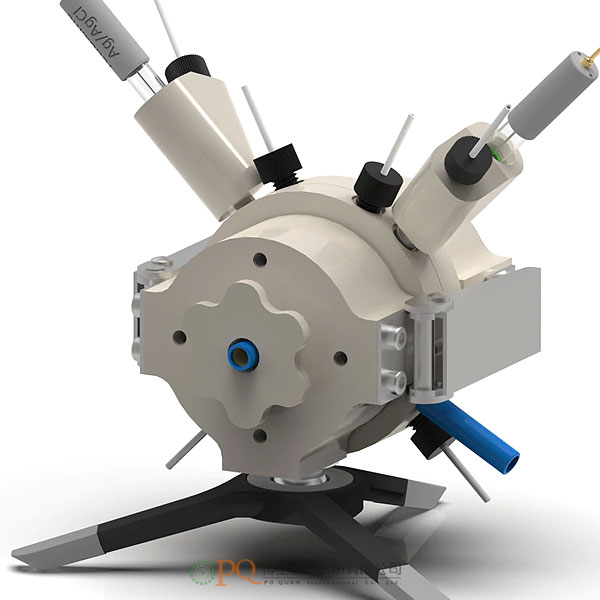Devanathan-Stachurski 滲透槽
DEVANATHAN-STACHURSKI PERMEATION CELL, MODEL A 型號:MODEL ATheDevanathan-Stachurski Permeation Cell is an electrochemical double-compartment, four-electrode setup. It is typically used to investigate hydrogen permeation in steels and other alloys (diffusion constants of hydrogen in materials, density of trap sites and trap energies) as well as to evaluate ion-exchange membranes (gas diffusion coefficient/crossover, gas solubility and gas permeability typically of H2, O2, CO and H2S). Moreover, this cell can be also used with Impedance Spectroscopy to measure ionic conductivity of membrane in 2- and 4-probe setup. In the former case, a current is applied between polarizing electrodes while potential is measured across separate reference electrodes. The measurement is therefore agnostic to any side reactions occurring at the polarizing electrodes. Luggin capillaries that make an ionic connection between permeated material and reference electrode, minimize the contribution from the ohmic drop in an aqueous electrolyte. Those Luggin capillaries are located closely to the studied permeable material and outside of the current path between polarizing electrodes. The cell elements are constructed with materials that are inert to the sample (PEEK and other fluorinated plastics). It well fits aqueous (FKM O-Rings and gaskets) electrolyte requirements. An organic electrolyte version is available on request. The construction is gas tight. Reference electrodes and polarizing electrodes are not included in the setup and should be added to the quotation separately.
-
Application note
For measurements of permeation through the electronically conductive material such as metal foil, both sides of the sample form the working electrodes in two separate electrochemical cells/compartments (common WE). In this case the studied permeated material should be electronically connected to the WE contact using a stripe of a thin metal foil (not included). In one compartment the sample is potentiostatically or galvanostatically charged with hydrogen. This chamber is typically connected with an external reservoir and the electrolyte is circulating in a loop. In the other compartment the other side of the permeated material is polarized anodically so that the permeating hydrogen is fully oxidized. The measured anodic current provides a direct information about the hydrogen permeation.
This cell can be also used to measure the performance of ion-exchange membrane in electrochemical processes such as fuel cells, redox flow batteries, or reverse electrodialysis. In this case the cell is used to measure membrane selectivity and conductivity, which together determine the energy efficiency. When studying ion-exchange membranes, the sample is not electronically connected.
Various polarizing electrodes materials are suitable for this cell including noble metal plates, Glassy Carbon plates and Boron-Doped Diamond plates. -
distance between polarizing electrodes: 12 mm
electrolyte volume needed: 2 x 0.35 mL
polarizing electrode size: 10 mm x 10 mm
polarizing electrode maximum thickness: 4 mm
chamber internal diameter: 8 mm
distance between Luggin capillaries: 2 mm
polarizing electrode geometrical surface area: 50.25 mm2
sample surface area exposed to an electrolyte: 2 x 50.25 mm2
Product includes
2 x chamber
2 x sample mount
2 x electrode screw mount
2 x copper piston
3 x banana 4 mm dia. plugs
2 x RE holders
1 x set of FKM O-Rings
1 x set of FKM gaskets
1 set of PEEK screws
1 x tripod








